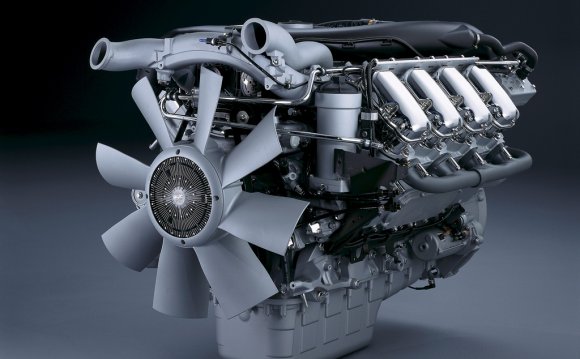ME100 Basics of Mechanical Engineering Module 2 : IC Engine's Full Notes
INTERNAL COMBUSTION ENGINE
Introduction
An engine in which the combustion of fuel takes place inside the engine itself is called IC engine. The purpose of Internal Combustion (IC) engines is the conversion of mechanical energy from heat energy produced by oxidation of fuel.
In 1860 JJE Lenoir developed the first internal combustion engine having an efficiency of about 5%. Otto developed another model having efficiency 11%. Then modified this engine with an engine cycle with four piston strokes, an intake, compression, expansion and an exhaust stroke. His proto type engine first ran in 1876 with better thermal efficiencies.
Any machine which derives heat energy from the combustion of fuel and converts the part of this energy into mechanical work is known as heat engine. Heat engines are mainly divided as i) External combustion engine and ii) Internal combustion engine.
The internal combustion engine (I.C.) engine offer some special advantages over external combustion engine (steam engine) as listed below:
The thermal efficiency of IC engine(30-35%) is much higher than steam engine(15-25%).
IC engine is lighter and occupies less space.
It can be started quickly.
It offers greater mechanical simplicity.
2. CLASSIFICATION OF I.C. ENGINES
I.C. engines may be classified as follows
1) According to the type of fuel used:
a) Petrol engine
b) Diesel engine
c) Gas engine
2) According to the number of strokes required to complete the cycle.
a) 4-stroke engine
b) 2-stroke engine
3) According to the cycle of operation
a) Otto cycle
b) Diesel cycle
4) According to the method of ignition
a) Spark ignition (SI)
b) Combustion ignition (CI)
5) According to method of cooling
a) Air cooled
b) Water cooled
6) According to the method of governing
a) Quality governing
b) Quantity governing
7) According to the speed of the engine
a) Low speed
b) Medium speed
c) High speed
8) According to the arrangement of cylinder
a) Horizontal
b) Vertical
c) In line
d) V-type
e) Radial engine
................





![S5 Syllabus Aeronautical Engineering [AOE S5] S5 Syllabus Aeronautical Engineering [AOE S5]](https://blogger.googleusercontent.com/img/b/R29vZ2xl/AVvXsEj2PPLWdDR9V5Z2HtJBkvr_sxzDh16IIx5rUNdYM5FdEc-2ERhjZiflLQzu-fJiee6Sh4wEC6iuqCfSghIReGoIb_qpTRiaNYA2Pidfq4tjfK-ojZdelYnPSR021Udp7OE0WmEJCxCe-QmF/s72-c/Aeronautical+Engineering.jpg)
![Module 1 Note-CS206 [JAVA] Object Oriented Design and Programming Module 1 Note-CS206 [JAVA] Object Oriented Design and Programming](https://blogger.googleusercontent.com/img/b/R29vZ2xl/AVvXsEhto9xQpDo57Fp5Pyu1RbyrWS-v3odTZBqAgqwatxPPWdEpGvZoVgAyYsFCQP-anjVJIh-ULan9v8p9MliBS7Hc1H9RydwDzVZgWxyBGk_vCNLDDG9MeyfDQiFl9zzUTwXD7EPv8KSIhO0/s72-c/KTU+CS206+Java+Note+module1.jpg)

![Model Question Paper:Thermal Engineering [ME204]](https://blogger.googleusercontent.com/img/b/R29vZ2xl/AVvXsEiiWfMso0XIgfl1apSV-U0P4cml_X8Vfk0IkEP39mbVXHduoI7-t0d1MFRJeWM-EqmMCghc4fC31DsLJgoa7gxsLbAJK-hyOCY7rOyMzCEAl-CY8soMnuRoU6lPo1ncUAQX0mkz7zIHw6s/s72-c/ktu+Thermal+Engineering+%255BME204%255D.jpg)







No comments: